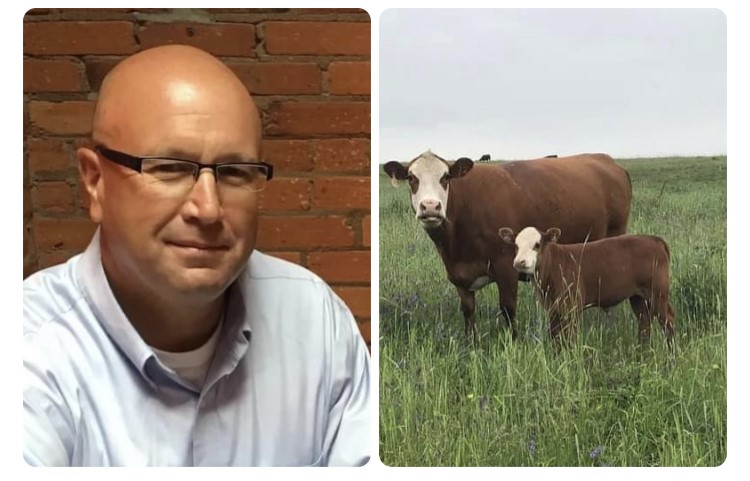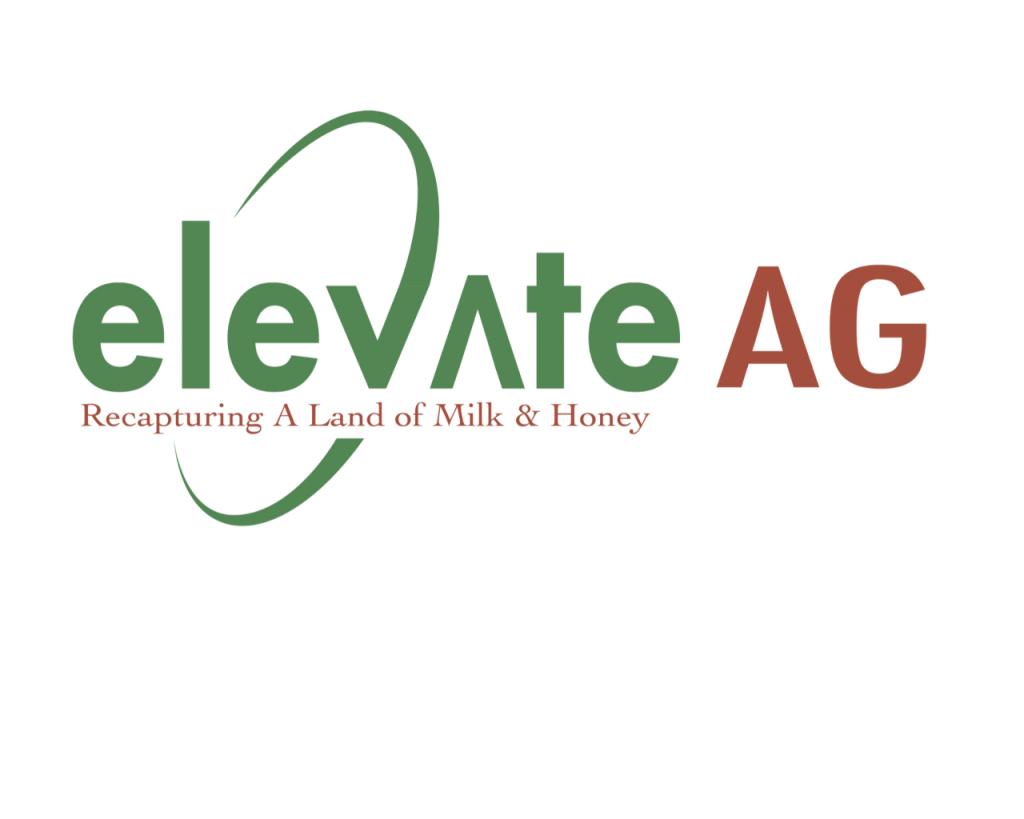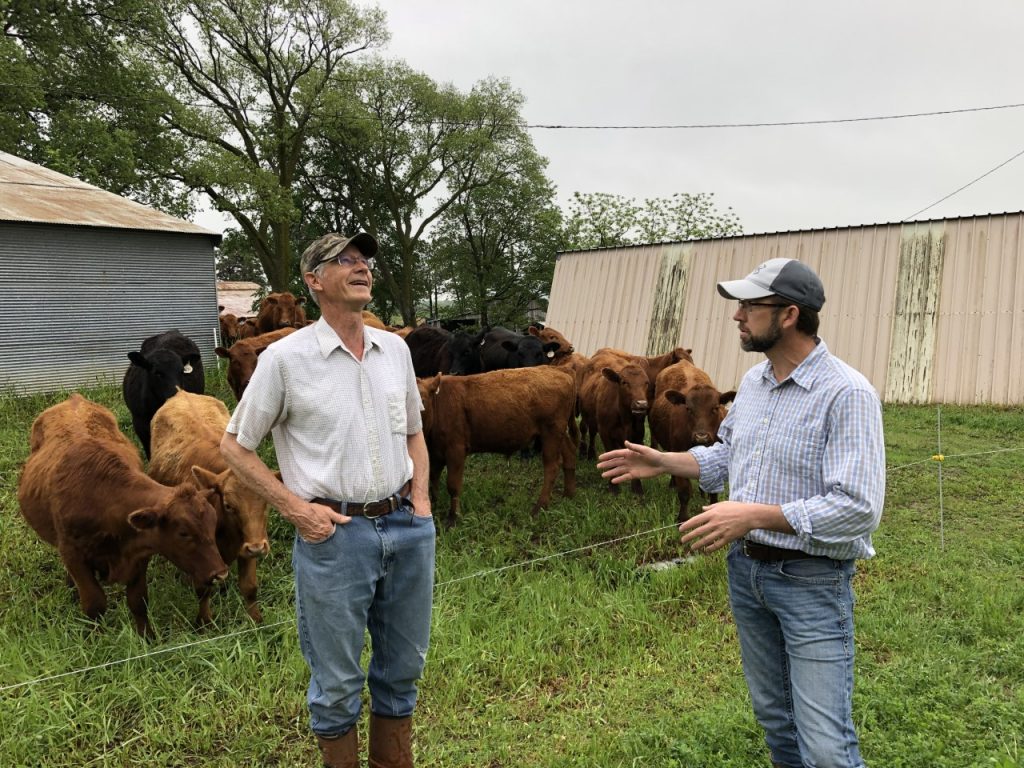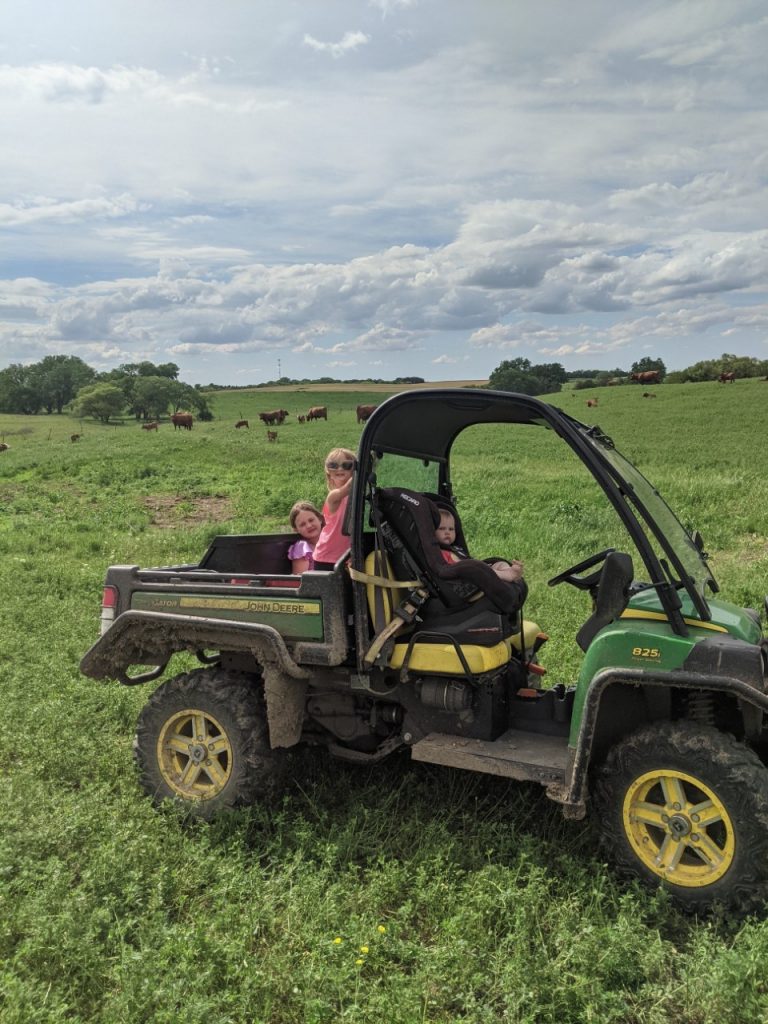
Learning Opportunity: Monday, June 7
June 5, 2021


Register here: https://elevateag.ck.page/1bb20883c3
(A Zoom link will be sent to you closer to the webinar after you register).
Thank you Green Cover Seed for sponsoring this webinar.
Have you missed registering for the Elevate Ag no-cost webinar series? There are only two more to go. This coming Monday, June 7 at 11 a.m. Central Time. I will be talking cover crops, cows and how to keep cash in your pocket.
www.elevateag.com
“I am honored to call Brian neighbor and friend. I have learned much from him and hope you do as well!” Del Ficke

Observational Agriculture
Brian Brhel pulls into his father, David Brhel’s, farm drive near Denton, Neb. David walks up – tall, and slender, built like an Eastern Nebraska “Honest Abe.” He asks his son what the ag markets are up to and then motions over to the garden he and his wife Eileen are enjoying. The two men marvel at the fruitful, lush greens. The extra bounty is already being shared with neighbors even at this early point in the growing season. Behind the father and son, are a herd of 20 cattle.
“I have 20 lawn mowers,” Brhel laughed, motioning to the livestock grazing gently behind them.
“My parents have been so supportive of my changes. That has made all the difference in my life,” he made sure to relay.
“Regenerative Ag,” seems too much of a label for Brhel’s free-thinking mindset, but he gets it. “I guess people need labels. You can get placed in these ‘boxes’ and I know why. It’s because people want to associate with some type of direction. What comes to mind for me though is we are simply following ‘nature’s guide’ and natural processes. No matter how you want to label that, it’s about observation and using your brain.”
Observational farming.
“We need to try new things. We need to think on our own. We need to be learning from each other,” Brhel said, jumping back into the pickup to head back to his farm location. “And, I mean, what better way to spend your day than listening to cows eat fresh grass? I have 80 heifers happy to see me because I gave them a new strip of rye. There is a lot of enjoyment when you see the cattle are happy. That is a little piece of heaven for me.”
In 2005, Brhel started his path to his self-described “observational agriculture” by envisioning a plan to bring cattle back to his cropland through grazing forages, “The farm has evolved from conventional corn, soybean, alfalfa, and occasional wheat rotation to a more flexible and diverse cropping plan that includes corn, milo, soybeans, triticale, hairy vetch and forage peas. Beef cattle have always been part of the farm, but are now used in ways that bring multiple benefits with less cost.”
“When I started, I used forage sorghum and grazing corn as a way to add weight to stocker cattle, grass-finished beef or the cow/calf herd. Getting the cattle out of the yards and onto the land was a big step. Herd health was a huge benefit of that move. The manure spreader was sold shortly after. We haven’t spread manure for 15 years. We sold it. That was a good day. I did not enjoy working on a manure spreader. When things move, they break.”
Brhel said the fibrous root system of forage sorghum really helped his heavy, clay soils when grazing in non-irrigated Eastern Nebraska rolling hills, “The goal was to leave all the plant material on the field.”
“If you want to turn a piece of ground around and you are just starting out, put some forage sorghum in and graze it with cows. Don’t harvest with a machine!” He said adamantly. “Graze with cows and leave everything there. The corn we planted after that forage sorghum was visibly better. You could tell it even just by driving by the field. The plants were healthier. Even more so they were healthier where the cattle walked back to the cattle tank along the temporary fence I put in. If you want to get biology going, forage sorghum was key for me early on. Now I am growing forage sorghum with hairy vetch as the legume component. You do have to be careful how much forage sorghum you plant because the legume won’t get enough sun. For fibrous root systems in the ground, thick forage sorghum did it for me and we are also pumping carbon through those fibrous roots. All of this feeds the soil.”
Cattle are an integral part of the equation.
“Cattle are raised on permanent pasture two-thirds of the year and the other one-third they are grazed on planted forages or crop residue,” Brhel explained. “Some of the fall planted small grains are grazed in spring just before planting. Using summer harvested crops allows me the opportunity to plant multi-species covers that can add high value forage at a critical time.”
“Cattle genetics are based on the experience and ability for the animal to survive and thrive on forage alone. If they would receive grain as a fattening ration later in their life, then there will be no issue with efficiency. I tend to be less concerned with the color or breed, as I am finding the animal that fits my environment with few inputs or attention.”
The cow herd receives “zero” vaccinations or pour-ons Brhel noted, “The calves receive one-round of shots before weaning. The cow works for me, not the other way around. I am only tasked with providing the appropriate forage to meet her needs to perform.”
Why did you try Elevate Ag biologicals?
“I took a class on how to make compost extract and was already following the path to using biology on seed and plants to encourage growth performance – instead of using, or to complement, the commercial fertilizer that was being applied to my crops. Elevate Ag had products along that same line of thought, and they bring more diversity in their products than I was providing in my extract.”
“I put HyprGerm on the forage pea seeds I planted this spring and I plan to follow up with a HyprGrow foliar application. They look great so far above ground and have fantastic nodulation underground with no fertilizer applied in the last two years! Last year the field was planted to a small grain crop, followed by a drought stressed cover crop, then winter grazed.”
“The HyprGrow brought in the seaweed and other components that I would not be able to provide with my extract. HyprGrow will provide the diversity I need to feed the diverse ‘livestock’ under the ground – biology like nematodes, protozoa, bacteria, and all the arthropods that feed on the life that we need to focus on first. Because the bugs eat first, and then they provide the nutrients to the crop. How do we protect life? We don’t protect soil life by using fungicides or insecticides on the seed. Elevate Ag products are a way for me to jump start what I am trying to do in the soil,” he noted.
“The real test is at harvest, but this is a great start,” he said.
What are your dreams and your big, “why?”
“There is a lot of faith that goes into this,” Brhel relayed. “I hope to be able to share my struggles and victories with others who want to take this path in their farming efforts. In that sharing, I also plan to bring value through selling cover crop seed grown on the farm and will custom clean and condition seed for others while also marketing the cattle. These enterprises complement each other and will allow me to make a living from the land.”
Making a living means using tools and technology, but not going broke doing so too, “I am really careful about leveraging debt. I could borrow money for better equipment; but I choose not to. I am using a combine from 1987 and a tractor from 1985. I do utilize GPS, but I don’t have late model sets of equipment. I am not against them, but those things don’t create soil health! I have a no-till drill and seeds to create soil health! We need to let these plants express themselves and let the roots grow deep. This means changing and expanding the crops we are growing. That is not always comfortable. It can be socially uncomfortable and economically uncomfortable because you may not have experiences with that new crop or the established market yet.”
“It’s about investing now for the payback later,” Brhel said with enthusiasm. “It’s already happening with the fertility I am gaining. I am still comfortable in my lifestyle and I can support the health of my soil and my community by reducing some of the inputs we think we need.”
It’s all about better agriculture for a better world, he pointed out in conclusion, “I am really interested in building community through partnerships and sharing, whether sharing information or renting equipment from a neighbor or paying them to do work for me because I cannot afford the equipment. I spend a lot of time developing relationships. In turn, those relationships create win-win situations.”
Brhel was also kind enough to compile a list of encouraging first steps his peers in agriculture can take as they make changes in their endeavors:
- Viewing the soil as a living organism is a completely new way to farm for most people (strange as that may seem). Maintain an open mind.
- Seek out a support group of peers you can lean on to learn from. Those peers may not be your neighbors.
- Be ready and excited to try something on a small scale. I have learned a lot from simply my garden.
- Think about your “why?” What is your goal? If it is only money, you will fail at this. There are too many benefits to list that may not bring money immediately, but lead to profitability.
- You can read all you want or attend all the webinars, but learning really happen when you “do it!” Take a smaller field and devote it to going “all in.”
- The question is not if soil health principles work, it is, “how do I make them work on my farm?” My soils are visually different than only a few years ago. The soil tests are confirming this. I have a long way to go, but I now have a direction to keep improving.
Isn’t it inspiring hearing from farmers and ranchers taking all sorts of different steps to improve their businesses? We think so! Call us!
Del Ficke | 402-499-0329 | del.ficke@elevateag.com
Travis Kraft | 719-342-1706 | travis.kraft@elevateag.com
©2021 Kerry Hoffschneider. All rights reserved.

The youngest members of the Ficke clan taking over fencing duties at Ficke Cattle Company say,
“See you in July for our regular newsletter!”
Thank you so much!
No electronic or mechanical reproduction of The Liberator is permitted without direct consent of the author, Ficke Cattle Company. Contact (402) 499-0329 or fickecattle@outlook.com Thank you so much for reading!
Copyright © Ficke Cattle Company – Graze Master Genetics, All rights reserved.
